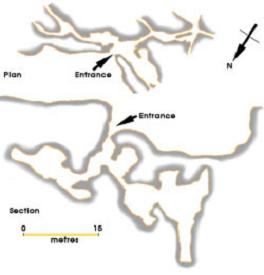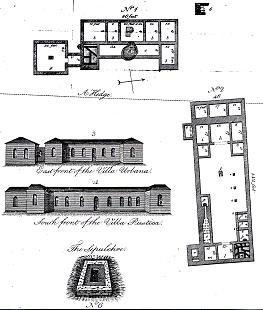Prehistory is not just about the big important sites like Stonehenge. Prehistoric archaeology is all around you and can form a new starting point for a local history study. Matthew Beresford of MBArchaeology has been working on the past of Pleasley Vale, just north of Mansfield on the Derbyshire/Nottinghamshire border.
Generally in this region, human occupation during the Ice Age can be traced back no further than 60,000 years ago, when Neanderthals were using the caves as shelter sites, for example at nearby Creswell Crags.
The earliest evidence of landscape use at Pleasley Vale comes from the two cave sites within a limestone gorge. No human occupation was found, but a wide variety of Ice Age animal remains were recovered in the late 19th century. Pleasley Vale Cave was discovered in 1862. Inside the cave were the bones of reindeer, woolly rhinoceros, wolf and wild horse – animals that lived in a rather cold climate. The second cave, known as Yew Tree Cave, was explored by William Ransom in the 1860s, where he discovered bones of roe deer, wolf and pig, indicating a warmer climate. Clearly the area was used over thousands of years.
Fieldwalking in the surrounding fields at Pleasley has revealed Neolithic (c.4500- 2500BC) flint tools and Bronze Age (c.2500-700BC) flints and metalwork, including part of a bronze bracelet and a bronze spearhead (found on separate occasions) just to the east of Pleasley Vale very close to the local water source. This may suggest they were offerings placed in the water, a common practice in the Bronze Age period and relating to religious beliefs.
Pleasley’s Roman villa may well have grown out of an earlier Iron Age settlement. The villa site at Pleasley Vale was first discovered in 1787 by Major Hayman Rooke, a local archaeologist who lived at Mansfield Woodhouse. Rooke and his team found traces of early timber buildings that dated to around AD 80 – this is quite an early date for a farmstead as military occupation was still heavy in the area, largely due to the trouble caused by local Iron Age tribes, the Brigantes in Derbyshire and the Corieltauvi in Nottinghamshire.
Pleasley Vale’s history extends into the more familiar medieval and post-medieval periods, and right up to the modern day. Further information can be found in the publication Pleasley Vale: A Journey Through Time (2012) edited by Matthew Beresford, and is available as a free downloaded via http://www.mbarchaeology.co.uk/wp-content/uploads/2012/10/Pleasley-Vale-Journey-through-time.pdf
An education box was also created on the site, and is stored with the Bolsover District Council team at the Greaseworks building at Pleasley Vale. This features educational resources, information, artefacts and activities, and was designed for use by schools and local groups.
Matthew Beresford is an archaeologist and teacher who runs MBArchaeology, specialising in Community Archaeology and education. He leads the archaeology element of the Limestone Journeys project, for which the Pleasley Vale research was undertaken. He is also author of Beyond The Ice: Creswell Crags and its place in a wider European perspective (Oxford: Archaeopress, 2012), and co-runs the hugely popular Ice Age Camp family learning archaeology sessions during the summer. For more information visit www.mbarchaeology.co.uk



Pingback: Prehistory in Pleasley Vale | MBArchaeology